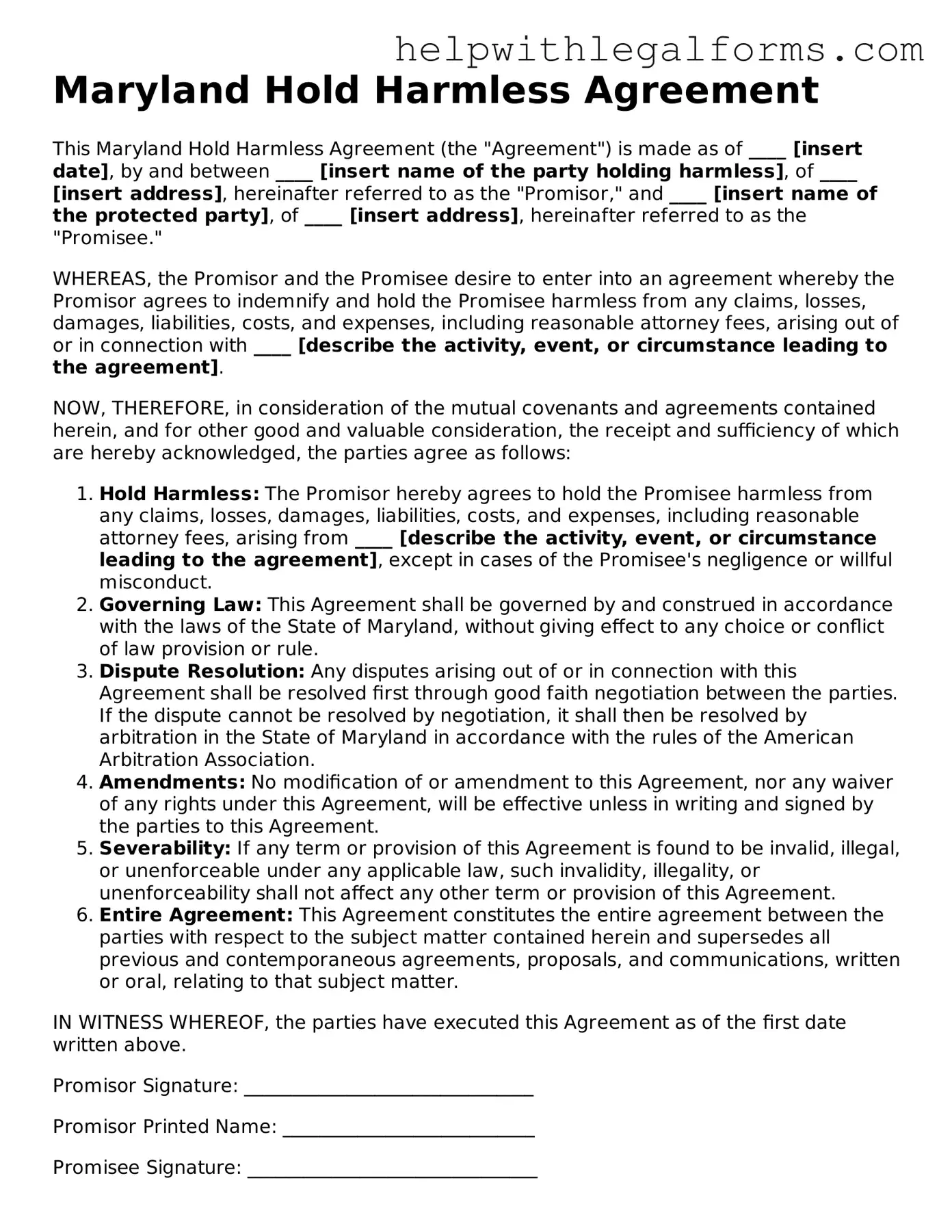Maryland Hold Harmless Agreement
This Maryland Hold Harmless Agreement (the "Agreement") is made as of ____ [insert date], by and between ____ [insert name of the party holding harmless], of ____ [insert address], hereinafter referred to as the "Promisor," and ____ [insert name of the protected party], of ____ [insert address], hereinafter referred to as the "Promisee."
WHEREAS, the Promisor and the Promisee desire to enter into an agreement whereby the Promisor agrees to indemnify and hold the Promisee harmless from any claims, losses, damages, liabilities, costs, and expenses, including reasonable attorney fees, arising out of or in connection with ____ [describe the activity, event, or circumstance leading to the agreement].
NOW, THEREFORE, in consideration of the mutual covenants and agreements contained herein, and for other good and valuable consideration, the receipt and sufficiency of which are hereby acknowledged, the parties agree as follows:
- Hold Harmless: The Promisor hereby agrees to hold the Promisee harmless from any claims, losses, damages, liabilities, costs, and expenses, including reasonable attorney fees, arising from ____ [describe the activity, event, or circumstance leading to the agreement], except in cases of the Promisee's negligence or willful misconduct.
- Governing Law: This Agreement shall be governed by and construed in accordance with the laws of the State of Maryland, without giving effect to any choice or conflict of law provision or rule.
- Dispute Resolution: Any disputes arising out of or in connection with this Agreement shall be resolved first through good faith negotiation between the parties. If the dispute cannot be resolved by negotiation, it shall then be resolved by arbitration in the State of Maryland in accordance with the rules of the American Arbitration Association.
- Amendments: No modification of or amendment to this Agreement, nor any waiver of any rights under this Agreement, will be effective unless in writing and signed by the parties to this Agreement.
- Severability: If any term or provision of this Agreement is found to be invalid, illegal, or unenforceable under any applicable law, such invalidity, illegality, or unenforceability shall not affect any other term or provision of this Agreement.
- Entire Agreement: This Agreement constitutes the entire agreement between the parties with respect to the subject matter contained herein and supersedes all previous and contemporaneous agreements, proposals, and communications, written or oral, relating to that subject matter.
IN WITNESS WHEREOF, the parties have executed this Agreement as of the first date written above.
Promisor Signature: _______________________________
Promisor Printed Name: ___________________________
Promisee Signature: _______________________________
Promisee Printed Name: ____________________________
